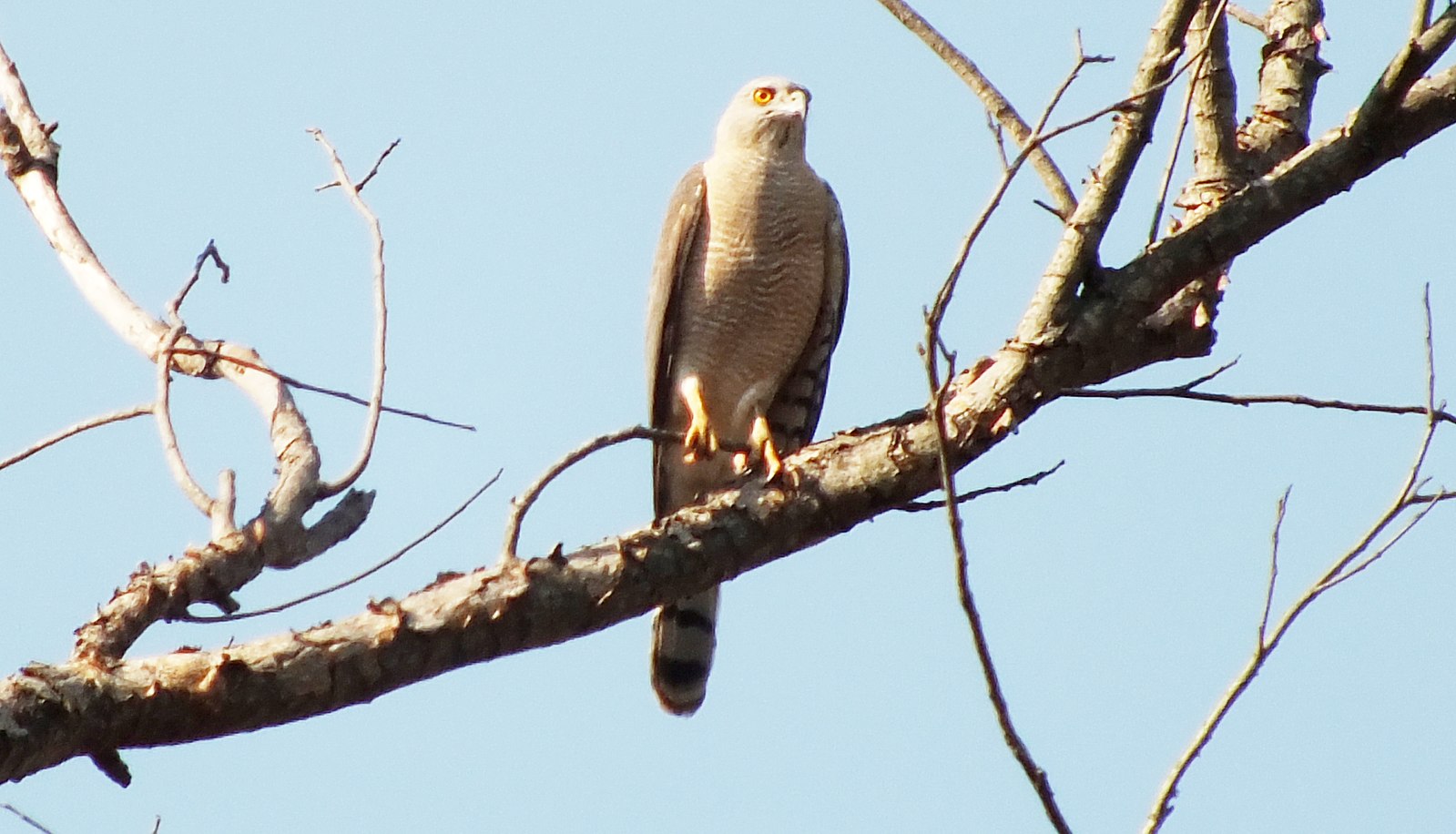The shikra (Accipiter badius) is a small bird of prey found widely distributed in Asia and Africa. With a population size estimated between 500,000 to 999,999 mature individuals, the shikra is a fascinating species that has adapted to a variety of habitats, from forests to urban areas.
Habitat and Distribution
The shikra is found in a range of habitats, including:
- Forests
- Farmland
- Urban areas
They are usually seen singly or in pairs, and their flight is characterized by a distinctive flap and glide pattern. The shikra’s distribution spans across Asia and Africa, with the African forms potentially representing a separate species.
Physical Characteristics
 Image source: SHIKRA by Shiv’s fotografia
Image source: SHIKRA by Shiv’s fotografia
The shikra is a small raptor, measuring between 26-30 cm in length. Like other Accipiter hawks, it has short, rounded wings and a narrow, elongated tail. The adult plumage is distinctive, with:
- Whitish underside with fine rufous bars
- Grey upperparts
- Less barred lower belly and whitish thighs
Males and females can be distinguished by their eye color, with males having a red iris and females having a yellowish-orange iris. Females are also slightly larger than males.
Feeding Habits
The shikra is an opportunistic predator, feeding on a variety of prey, including:
- Rodents
- Squirrels
- Small birds
- Small reptiles (mainly lizards, sometimes small snakes)
- Insects
They will also descend to the ground to feed on emerging winged termites and hunt at dusk for small bats. In rare instances, they may even resort to feeding on carrion.
Breeding and Nesting
The shikra’s breeding season in India typically occurs during the summer, from March to June. Both sexes participate in building the nest, which is a platform similar to that of crows, lined with grass. The usual clutch size is 3 to 4 eggs, but the female may lay replacement eggs if the original clutch is removed, potentially laying up to 7 eggs in a single season.
Behavior and Interactions
The shikra is known for its distinctive two-note call, which is often mimicked by drongos. This behavior is thought to aid in stealing food by alarming other birds that the drongos associate with.
Smaller birds, such as babblers, have been observed to rally together to drive away a shikra, while a small blue kingfisher has been seen diving into water to escape the raptor. The shikra’s flight often draws alarms from smaller birds and squirrels.
Conservation Status
According to the IUCN Red List, the total population size of the shikra is around 500,000-999,999 mature individuals. The European population is estimated at 10,000-100,000 pairs, which is considered stable.
Conclusion
The shikra is a fascinating bird of prey that has adapted to a wide range of habitats across Asia and Africa. Its unique physical characteristics, feeding habits, and behavioral traits make it an intriguing subject for birdwatchers and naturalists alike. As a species with a relatively stable population, the shikra serves as an important part of the ecosystem, playing a crucial role in the balance of its environment.
References:
– https://www.thainationalparks.com/species/shikra
– https://en.wikipedia.org/wiki/Shikra
– https://animalia.bio/shikra?property=145


